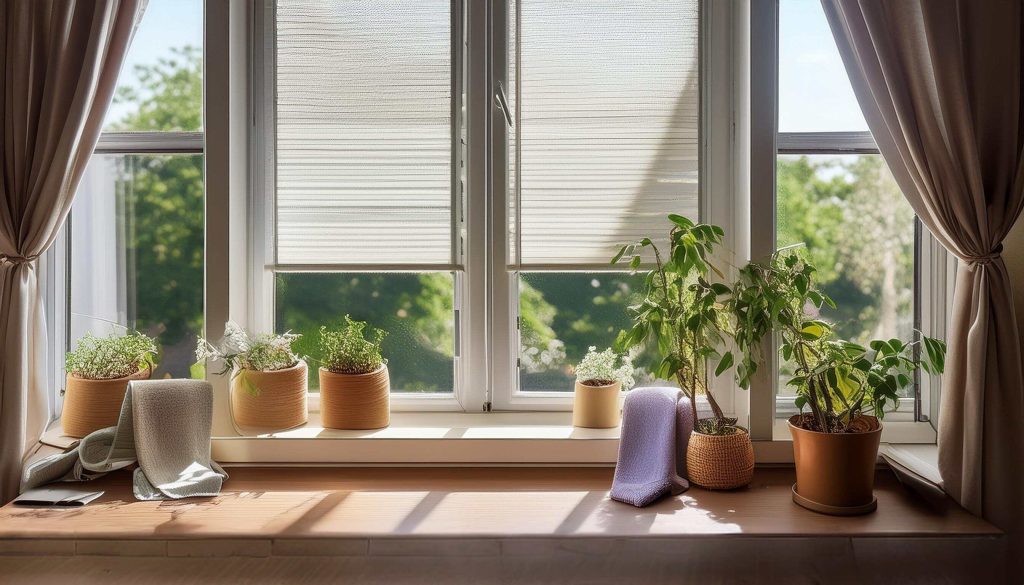Windows are the eyes of your home, letting in light and offering a view of the world outside. However, they can quickly become dirty, obscured by dust, smudges, and grime. Cleaning your room windows not only improves your view but also brightens up your entire space. Whether you’re preparing for a special occasion or just doing your regular cleaning, here’s a simple, easy-to-follow guide on how to clean a room window effectively.
Materials You’ll Need:

- A bucket
- Warm water
- Mild dish soap or a commercial window cleaner
- A squeegee
- Microfiber cloths or lint-free paper towels
- A soft brush or vacuum with a brush attachment
- A step ladder (if needed)
- A small sponge or soft cloth
- White vinegar (optional)
Step 1: Gather Your Supplies
Before you start, make sure you have all the necessary supplies. This ensures that you won’t have to interrupt your cleaning process to look for something.
Step 2: Prepare the Window Area
Remove any curtains, blinds, or decorations around the window. This will give you clear access to the entire surface. If possible, take them outside to shake off dust or put them in the laundry.

Step 3: Dust and Vacuum the Window Frame
Using a soft brush or the brush attachment of your vacuum, clean the window frame and sill. This removes loose dirt and dust, preventing it from turning into mud when you start washing the window.

Step 4: Mix Your Cleaning Solution
Fill your bucket with warm water and add a few drops of mild dish soap. If you prefer a homemade solution, you can mix equal parts of water and white vinegar. We provide also Exterior Window Cleaning Company Dubai

Step 5: Wash the Window
Dip a sponge or soft cloth into your cleaning solution and wring it out so it’s damp, not soaking wet. Start from the top of the window and work your way down, wiping the glass in a circular motion. This helps to cover the entire surface and remove any grime or fingerprints.

Step 6: Rinse and Squeegee
Once the window is clean, it’s time to rinse off any soap residue. Fill another bucket with clean water and use a clean cloth to wipe down the window. Then, use a squeegee to remove the water. Start at the top of the window and pull the squeegee down in a straight line, wiping the blade with a clean cloth after each pass to avoid streaks.
Step 7: Dry and Polish
Use a microfiber cloth or lint-free paper towels to dry and polish the window, removing any remaining water or streaks. Make sure to dry the edges and corners thoroughly.
Step 8: Clean the Window Frame and Sill
Don’t forget to clean the window frame and sill. Use your damp cloth or sponge to wipe them down, removing any dust or grime that might have settled there. Dry them with a clean towel.

Step 9: Rehang Curtains or Blinds
Once everything is dry, rehang your curtains or blinds. If they’re dusty, consider giving them a quick clean before putting them back up.
Extra Tips for Sparkling Windows:
- Clean on a cloudy day: Cleaning windows in direct sunlight can cause the cleaning solution to dry too quickly, leaving streaks.
- Use a microfiber cloth: These are excellent for leaving a streak-free finish.
- Be gentle: Avoid using abrasive materials that could scratch the glass or damage the window frame.
- Regular maintenance: Cleaning your windows regularly makes the job easier and keeps your view crystal clear.
By following these steps, you can ensure that your room windows are spotless and shining, enhancing the overall appearance of your home. Happy cleaning!
FAQ
Cleaning windows on a cloudy day or during early morning or late afternoon is ideal. This prevents the cleaning solution from drying too quickly in direct sunlight, which can cause streaks.
Yes, vinegar is an excellent natural cleaner for windows. You can mix equal parts of white vinegar and water for an effective cleaning solution that cuts through grime and leaves your windows streak-free.
For optimal clarity and cleanliness, aim to clean your room windows at least twice a year. However, if you live in an area with a lot of dust or pollution, you might need to clean them more frequently.
Avoid using abrasive cleaners, scrub brushes, or any tools that can scratch the glass. Also, steer clear of ammonia-based cleaners if your windows have UV film or tinting, as these can damage the coating.
To prevent streaks, use a squeegee and work from top to bottom, wiping the blade with a clean cloth after each pass. Additionally, dry the edges and corners with a microfiber cloth to ensure all moisture is removed.
